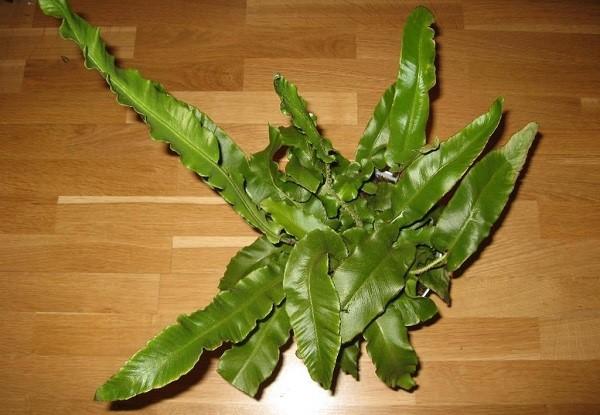Deer tongue for the winter garden - growing asplenium centipede
 Among the variety of asplenum species, it is worth highlighting the skolopendra fern. Most often it can be found as a wild terrestrial plant, which itself has many hybrid forms. But even in a closed room, the bush also willingly grows and develops, especially in the winter garden, where the air temperature is usually lower than in living quarters, which is what it needs.
Among the variety of asplenum species, it is worth highlighting the skolopendra fern. Most often it can be found as a wild terrestrial plant, which itself has many hybrid forms. But even in a closed room, the bush also willingly grows and develops, especially in the winter garden, where the air temperature is usually lower than in living quarters, which is what it needs.
Characteristics of the variety
Asplenium centipede is a rather tall plant, its total height reaches almost 1 m, although there are also compact bushes "growing" no more than 30 cm.
In contrast to the main fern species, which have lush feathery leaves, this asplenium has a flat and solid leaf plate with a leathery hard structure.
Depending on the variety, the length of the leaves can be from 10 to 60 cm, but they are always narrow in width, no more than 6 cm, and are painted in a rich green color. The edges of the plate are slightly wavy in most varieties, and curly in some hybrids; the leaf itself is attached to a long petiole. They grow mostly straight, but in tall species they begin to smoothly bend towards the ground.
For its long leaves, asplenium centipede was nicknamed "the deer tongue", and its scientific name is due to the special arrangement of sori during fruiting, due to which the leaf resembles a centipede (centipede).
What does a fern like?
The variety is one of the most unpretentious ferns, so growing it is not at all difficult. Asplenium centipede loves:
- Light soil... The best option for the substrate is a mixture of 2 parts of peat, 1 part each of sand and leaf earth, as well as 0.5 part of humus. As additional components, you can add charcoal and sphagnum, which will prevent stagnation of water and rotting of roots.
- Diffused light... Direct sunlight is contraindicated for ferns.
- Watering and spraying. In the summer, asplenium should be sprayed daily, and watered after 2-3 days. In winter, the frequency of watering should be reduced.
- Periodic feeding. Complex fertilizers for ornamental plants must be applied once a month from mid-spring to early autumn, while the dosage is used twice less than according to the instructions.
The plant feels great in a cool room, since it has good frost resistance, and is a frequent inhabitant of the winter garden.